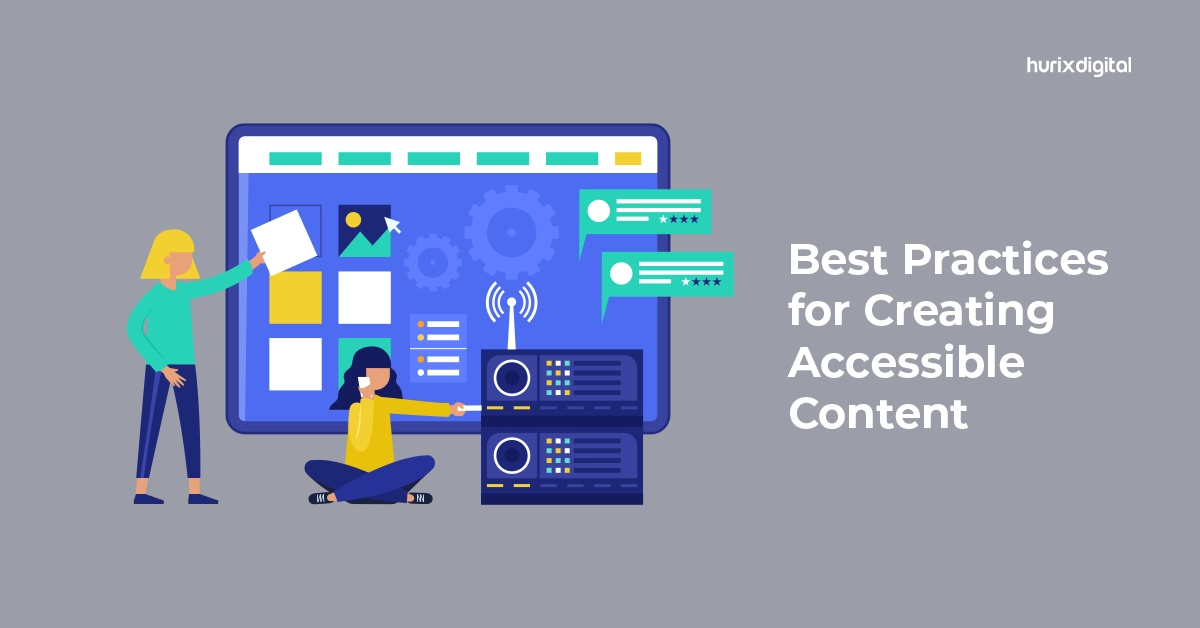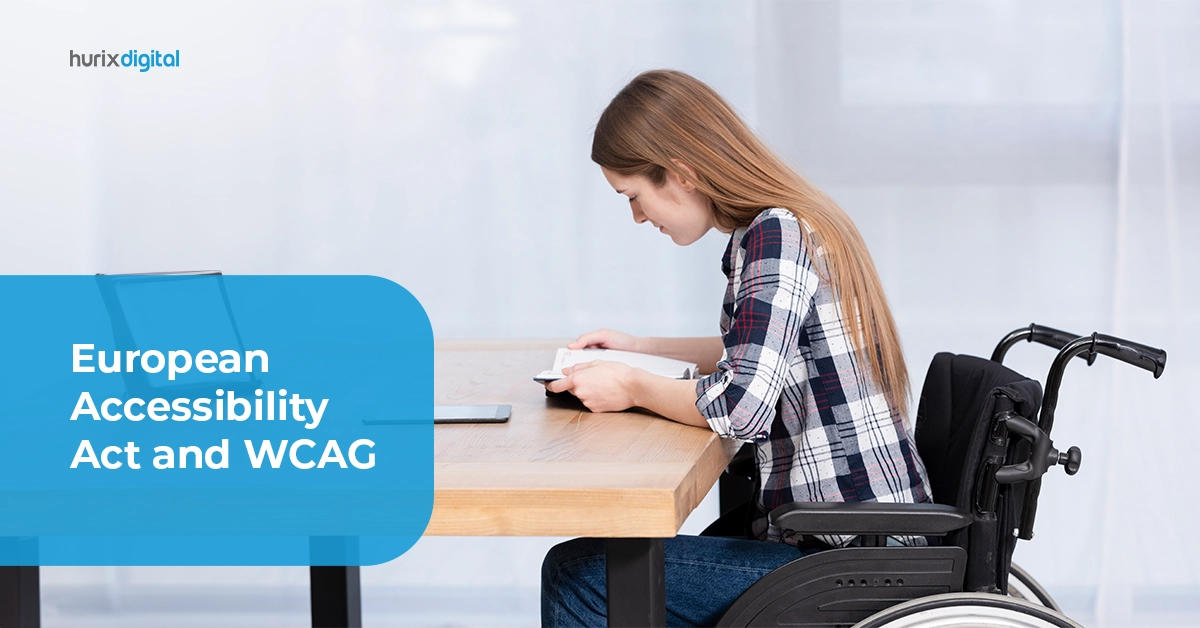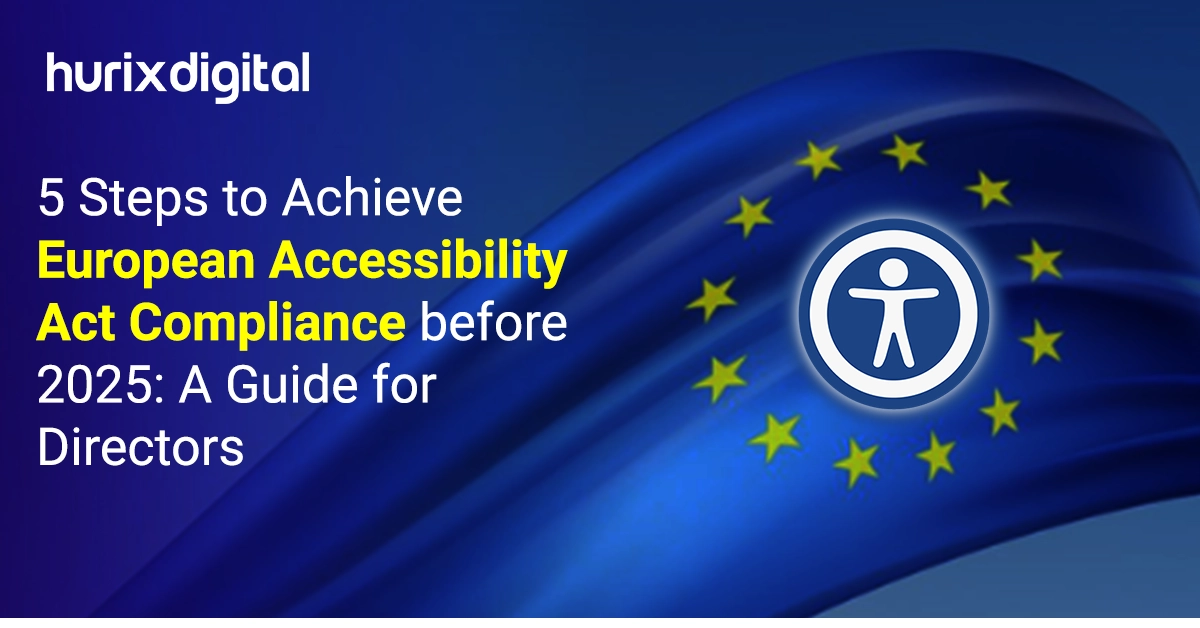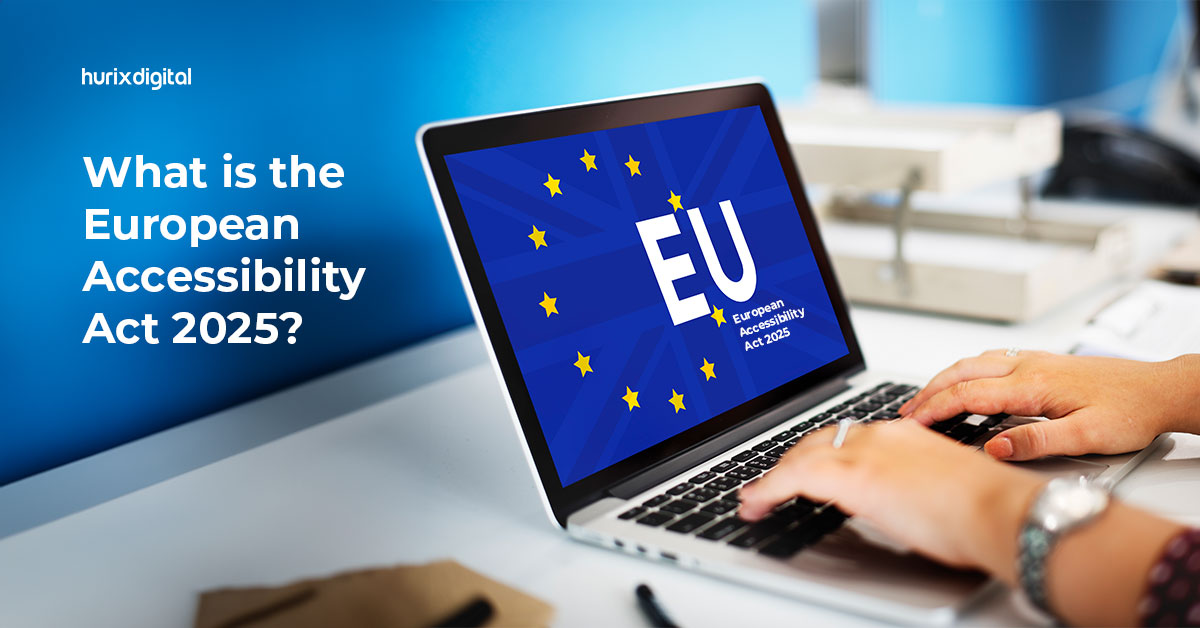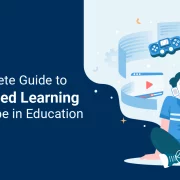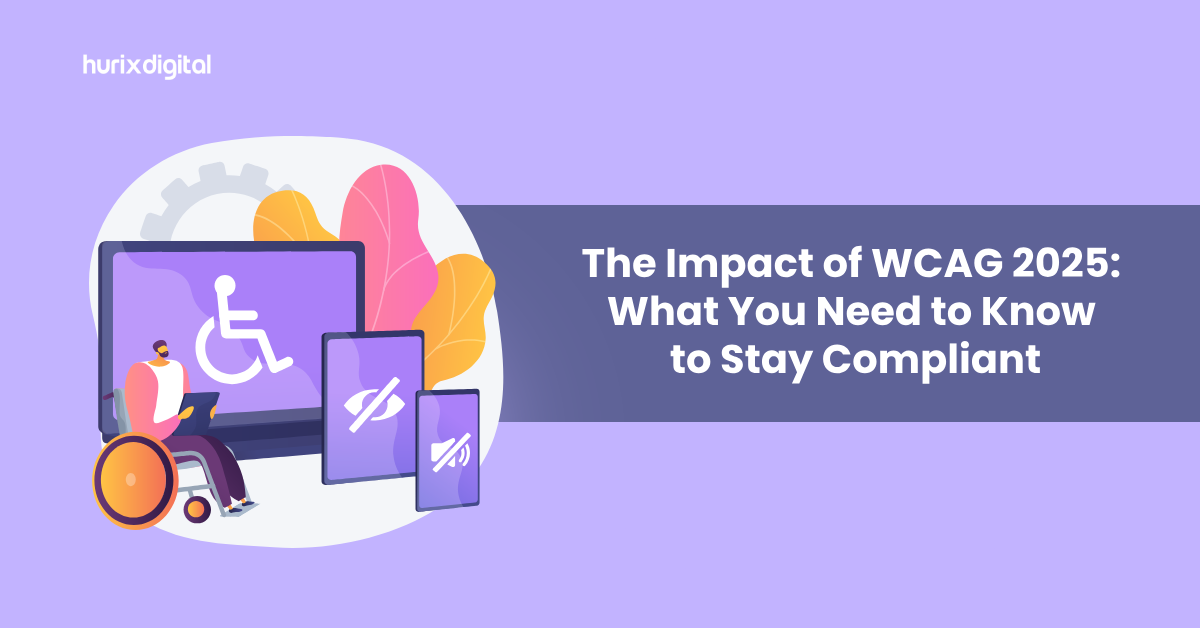
The Impact of WCAG 2025: What You Need to Know to Stay Compliant
In an era defined by digital connectivity, the importance of creating online spaces that cater to the diverse needs of users cannot be overstated. The Web Content Accessibility Guidelines (WCAG) offer a comprehensive framework to ensure digital content is accessible to individuals with varying abilities.
Furthermore, adhering to WCAG advancements embodies a commitment to inclusivity, innovation, and social responsibility. This blog aims to explore the role of WCAG 2025 guidelines, shedding light on their impact, legal compliance, and the broader fabric of our digital society.
Table of Contents
- A Brief Introduction to WCAG and Its Core Principles
- What You Should Know About the Latest WCAG 2.1 Guidelines?
- The European Accessibility Act (EAA) 2025
- EAA’s, WCAG 2.1 and Their Impact on Educational Publishers
- The Bottom Line
A Brief Introduction to WCAG and Its Core Principles
The Web Content Accessibility Guidelines (WCAG), specifically its latest iteration, WCAG 2.1, constitute a comprehensive global framework that outlines accessibility standards for digital content that aim to cater to individuals with diverse educational needs.
These guidelines serve as a universal reference for enhancing website accessibility. The European Accessibility Act (EAA) aligns itself with WCAG’s core principles, which revolve around four key aspects:
- Perceivability: Ensuring that information and user interface components are presented in ways that users can comprehend.
- Operability: Focusing on the usability of user interface components and navigation, making them functional and easily operable.
- Understandability: Emphasizing that information and the operation of the user interface must be clear and comprehensible to users.
- Robustness: Stipulating that content must be resilient enough to be reliably interpreted by a variety of user agents, including assistive technologies.
These fundamental principles, as defined by WCAG guidelines, are integral to the European Accessibility Act (EAA), as highlighted in the Act’s documentation on page 7.
Embracing these principles not only ensures compliance with the EAA but also contributes to a digital environment that is accessible and inclusive for users with diverse needs.
Also Read: Navigating Accessibility Standards: A Comprehensive Guide to WCAG & Web Content Accessibility
What You Should Know About the Latest WCAG 2.1 Guidelines?
WCAG 2.1 is like an upgrade to WCAG 2.0. It adds new rules to make websites more accessible. These new rules include things like making sure websites work well when your device is turned in different directions, explaining the purpose of input fields, and improving how text looks.
If a website follows the new rules in WCAG 2.1, it automatically follows the old rules in WCAG 2.0. Here is a table summarizing the total accessibility features in WCAG 2.0, newly added features in WCAG 2.1, and their total.
| Level | WCAG 2.0 | WCAG 2.1 | Total |
| A –
Basic web accessibility features |
25 | 5 | 30 |
| AA –
Biggest and most common barriers |
13 | 7 | 20 |
| AAA –
The highest level of web accessibility |
23 | 5 | 28 |
| Total | 61 | 17 | 78 |
Even if the official requirements mention WCAG 2.0, it’s recommended that websites start following WCAG 2.1. This is because it makes websites more accessible and ready for future rule changes.
Here are some of the new rules in WCAG 2.1:
- Orientation (AA): Websites should work well when your device is turned on.
- Identify Input Purpose (AA): Explain the purpose of input fields.
- Identify Purpose (AAA): Clearly state the purpose of the content.
- Reflow (AA): Content should adjust when you change the size of your screen.
- Non-text Contrast (AA): Make sure non-text elements have enough contrast.
- Text Spacing (AA): Improve text spacing for better readability.
- Content on Hover or Focus (AA): Ensure that content appears and works correctly when you hover over or focus on it.
- Character Key Shortcuts (A): Allow users to use keyboard shortcuts.
- Timeouts (AAA): Give users enough time to interact with content.
- Animation from Interactions (AAA): Ensure animations don’t confuse.
- Pointer Gestures (A): Support touch gestures.
- Pointer Cancellation (A): Allow users to cancel actions with touch gestures.
- Label in Name (A): Make sure labels match the names of elements.
- Motion Actuation (A): Support motion-based interactions.
- Target Size (AAA): Ensure that interactive elements are large enough.
- Concurrent Input Mechanisms (AAA): Support multiple ways for users to interact.
- Status Messages (AA): Provide clear messages about the status of the website.
WCAG 2.1 follows the same rules as WCAG 2.0 but adds a couple more. This is explained in the part about following the rules (Conformance section).
The idea is that if a website follows the rules of WCAG 2.1, it automatically follows the rules of WCAG 2.0. WCAG compliance makes the website meet certain accessibility standards and helps make it better for people using the internet.
The European Accessibility Act (EAA) 2025
The European Accessibility Act (EAA) was officially released on June 28, 2019, mandating that EU member states incorporate its directives into their national legislation by June 28, 2022. Within the subsequent three years, until June 28, 2025, the stipulations of the EAA must be fully implemented.
This legislative framework is expected to have implications for educational publishers, particularly concerning the adoption and adherence to the WCAG 2.1. Educational publishers will need to align their practices with the accessibility standards outlined in the EAA to ensure compliance with the regulatory requirements set forth by the European Union.
EAA’s, WCAG 2.1 and Their Impact on Educational Publishers
Amidst the ongoing anticipation of the EAA’s implementation at the national level, educational publishers are poised for significant changes, particularly in adopting the latest WCAG 2.1. This impending transition is inevitable, as the EAA underscores the necessity for access to audiovisual content and e-book files that seamlessly accommodate users with disabilities and their assistive technologies.
The EAA’s directives emphasize the importance of ensuring that all products align with the accessibility standards delineated in Section I of Annex I (pages 31-33). These requirements mirror the principles outlined in the WCAG, making compliance with WCAG 2.1 an integral aspect of meeting the accessibility mandates outlined by the Directive.
As educational publishers navigate this changing prospect, prioritizing the implementation of WCAG 2025 is not only a proactive measure but a crucial step toward ensuring inclusivity and accessibility in the digital educational ecosystem.
Check Out: WCAG – The Road to Making Businesses Accessible
The Bottom Line
Making adjustments to websites to address specific areas, as outlined in the new WCAG 2.1 guidelines, involves taking targeted actions to enhance accessibility in key aspects. Accessibility implementation aims to address specific challenges and create a more inclusive online environment.
By utilizing accessibility tools and implementing these changes, you comply with WCAG 2.1 and also enhance the overall user experience for individuals with diverse needs and preferences.
Empower your digital presence by letting Hurix Digital guide you to accessibility excellence. Reach out to our experts and embark on a journey towards inclusive design. Transform your platforms, celebrate diversity, and ensure every user’s experience is exceptional!
Contact us today to know more!

Vice President – Digital Content Transformation. He is PMP, CSM, and CPACC certified and has 20+ years of experience in Project Management, Delivery Management, and managing the Offshore Development Centre (ODC).
